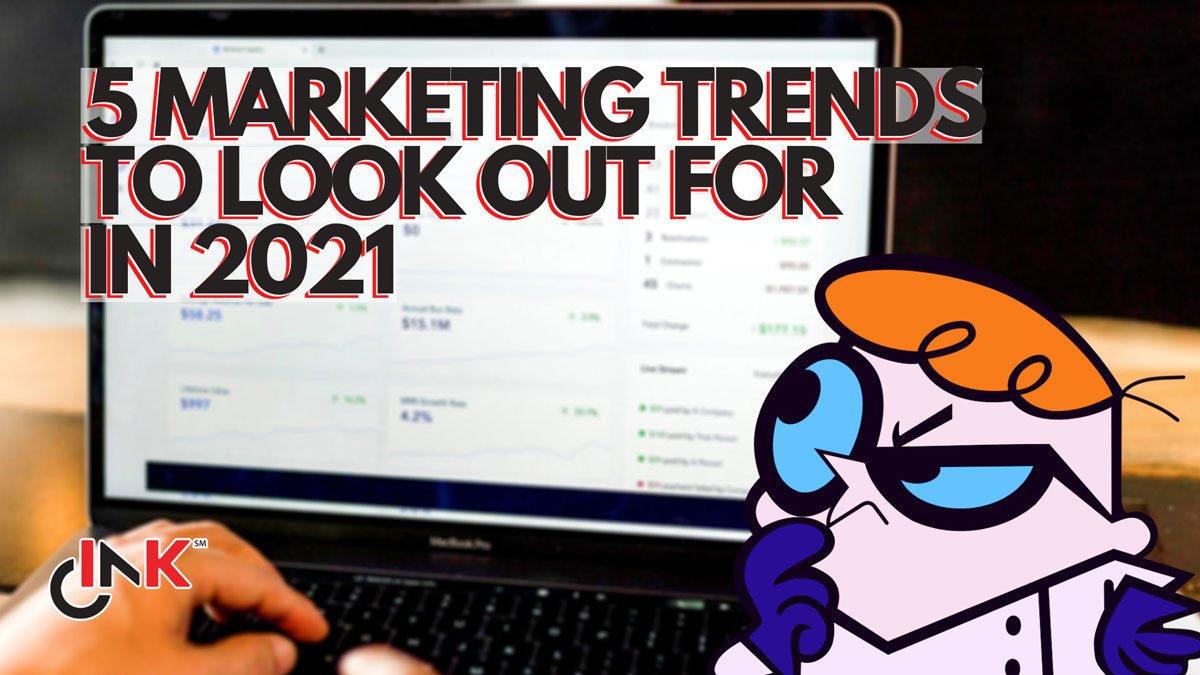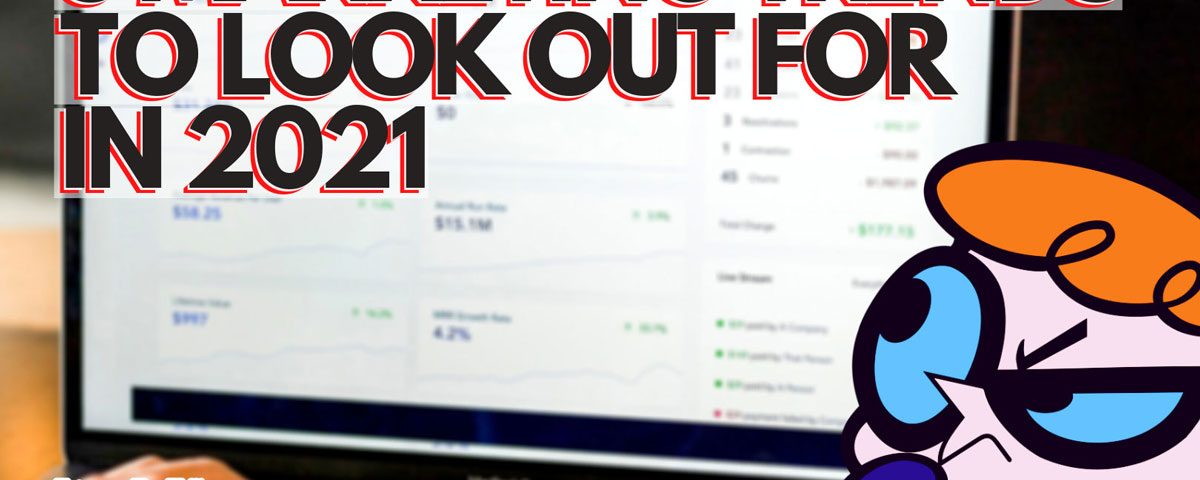
Where there is trouble there is also opportunity. This is no different for the recent COVID-19 pandemic that has left many businesses, big and small, reeling and scrambling to adapt to a disorientating new set of circumstances.
Big businesses may have the wherewithal to take a hit and keep moving forward, but that doesn’t mean that small, growing brands should fold for being comparatively less backed by resources.
New trends in marketing that have begun to emerge in 2020 as a result of the pandemic present these brands with golden opportunities to not only survive but thrive in the months ahead.
Let’s take a look at the 5 marketing trends that may take root in 2021, and how up-and-coming small brands can leverage them to their advantage:

1. Social commerce – the rise of shoppable posts
Since its launch in 2018, Facebook Shops, which lets brands tag their products inside their Facebook and Instagram posts as well as YouTube videos, has changed the game for e-commerce.
With the number of steps between viewing a product and paying for it at checkout decreasing, it’s only a matter of time before shoppable posts become the norm.
When someone sees products they fancy tagged in a post or video, they can click on it and head straight into the merchant’s website for more info before proceeding directly to checkout.
Now that COVID-19 is pushing countless more people into the online shopping space, it is an opportunity for small brands to up the ante for their social media content and links their catalog of products to engaging content to quickly close in on sales.
Most people will be at home, so forget about getting your message out on big money billboards and traditional channels.
Find ways to demonstrate the value of your goods more clearly and persuasively to your target audience, and you won’t need to worry about the competition or any extended stay-at-home orders.

2. The gig economy – when to outsource vs. when to insource
Remote work has become a necessity for many, and this is a good development for the gig economy.
Since many companies have started to mandate working from home, it makes sense for brands to outsource for specific skill sets, especially when it entails no long-term financial commitments.
Need brand identity design updates to migrate to a new website, or perhaps extra firepower for an ad campaign execution?
Graphic or UI/UX design and copywriting for short term needs have become more accessible as add-ons to a brand’s creative arsenal.
However, for many brands, outsourcing does not make sense.
There are a lot more touchpoints between your business and your customers via digital and social channels.
As a brand grows, so does the amount of data it has to process to continually serve its customers effectively grows significantly as well.
Therefore, in some areas insourcing makes more sense.
As brands scale, they have to each adopt a platform that allows them to bring together information from all of their disparate marketing channels so that they can form a complete view of the customer journey.
Simplifying this totality of data leads to actionable insights.
Brands can’t do that by involving contractors or consultants who are not aware of internal workflows, competencies, and technologies.
By the same token, the added steps of work handovers between a company and an external agency would only serve to complicate matters and further entangle what should be streamlined processes.
When it comes to talent, brands have more options. However, it is imperative to have clarity of strategy, in order to know what needs to be handled internally and what can be outsourced.

3. AI won’t steal jobs, but will spotlight skilled workers
Coupled by increased artificial intelligence (AI) work automation, the effects of the pandemic have led to a leaner workforce. However, According to the 2021 Global Marketing Trends report by Deloitte, 59% of executives don’t believe that this is the way to go for the long haul; they would want to revert to the workforce numbers of before.
The way forward is therefore not in laying off employees in favor of AI automation but to double down on work involving critical thinking and creativity for marketers. AI is our friend because it removes the dull and boring tasks from our plates. Once those tasks have been delegated to AI, the work function of marketers can be more strategic. They would regain time that would otherwise be lost to busywork to focus on fresher ways to drive value for the brand.
This has implications for the recruiting strategy of small brands as they expand. When low value tasks can be delegated to AI, the focus of hiring becomes less about how much work talents can deliver as marketers but rather how much value they can generate by designing better solutions and providing greater expertise leadership. Marketers don’t work in parallel with AI, they work using AI as a tool and leverage technologies to offer a deeper enrichment to a brand’s strategy.

4. Agile marketing – learn to withstand pandemic-led disruptions
If there’s one certainty with the pandemic, it is that people will be losing work, forcing many to move into new industries and a few to start disruptive businesses in the market. Brands like Airbnb, Uber, and Dropbox emerged out from the ashes of the 2008 recession. Not every up-and-coming brand can be a disruptor, but every brand should be designed to at least be able to weather disruption. To do so, they have to be made adaptable through agile marketing.
As mentioned earlier, connecting the dots of data sourced from the numerous touchpoints brands have with their customers provide them with actionable insights. The challenge is how quickly they would be able to prototype and launch new solutions based on those insights. By having conversations with the people who do and could buy from them, they can eventually discover emerging trends and shifts in consumer demand.
Would they then be able to respond quickly enough?
How rapidly brands are able to seize new opportunities would determine how well they would be able to manage disruptions in the market. Some may do well to go looking for disruptions in order to stay ahead in the market, but unless they have sorted out their internal readiness to respond adequately to various levels of disruptions, they would still end up falling behind.
One way emerging brands could start to do this is to pay attention to all the ways their customers give them feedback. Perhaps the small team that runs a brand hasn’t yet set up a CRM system, but they could still look for insights from spending time going through and responding to comments and reviews on social media and on their app store page. Scaling with adaptability in mind means that in time, an operation would grow to be responsive to market shifts by default.

5. Customers care more about brand promises, so be careful
Due to the struggles with work, family, and health, brands are beginning to change their messaging to display more empathy to their customers. Some do so for sentimental appeal and to remain relevant, while some show up differently by being truly helpful and living up to the values that they preach.
But what does that mean, exactly?
If for instance brands begin to make promises based on the safety needs of their customers during the pandemic, the key differentiator between them in this regard would be whether they are capable of making good on those promises.
Many customers who intend to shop at brick-and-mortar stores would want to know if it is safe to do so.
Operationally, would businesses be able to keep the promise of ensuring that all their premises are regularly sanitized?
And if so, how can they prove it?
Are they able to manage the traffic into their stores to ensure adequate social distancing?
Are they able to demonstrate that their premises are regularly sanitized?
How do they ensure their products are safe for customers to test?
Digitally, what is the level of security of their websites for customers to make purchases, especially if they have only recently migrated online?
Are brands able to ensure the confidentiality of customer information and prevent a data breach? If orders start coming in at higher than usual volumes, are they able to fulfill those orders within the promised timelines?
These are real concerns for emerging brands.
There are many ways to show customers who they are and what they’re made of, based on what promises they make.
This doesn’t necessarily mean that playing it safe is the right move. In order to grow, sometimes brands have to start making promises.
The challenge of opportunity in 2021
The barriers to growth for many new enterprises have dropped in the past few years.
The inevitable migration to the digital space for marketers has led to the need for more considered data collection and analytics, discernment in the use of AI and redesign of marketing processes, as well as better responsiveness to the needs of customers.
Are there any more marketing trends that you’re keeping an eye out for this year?




